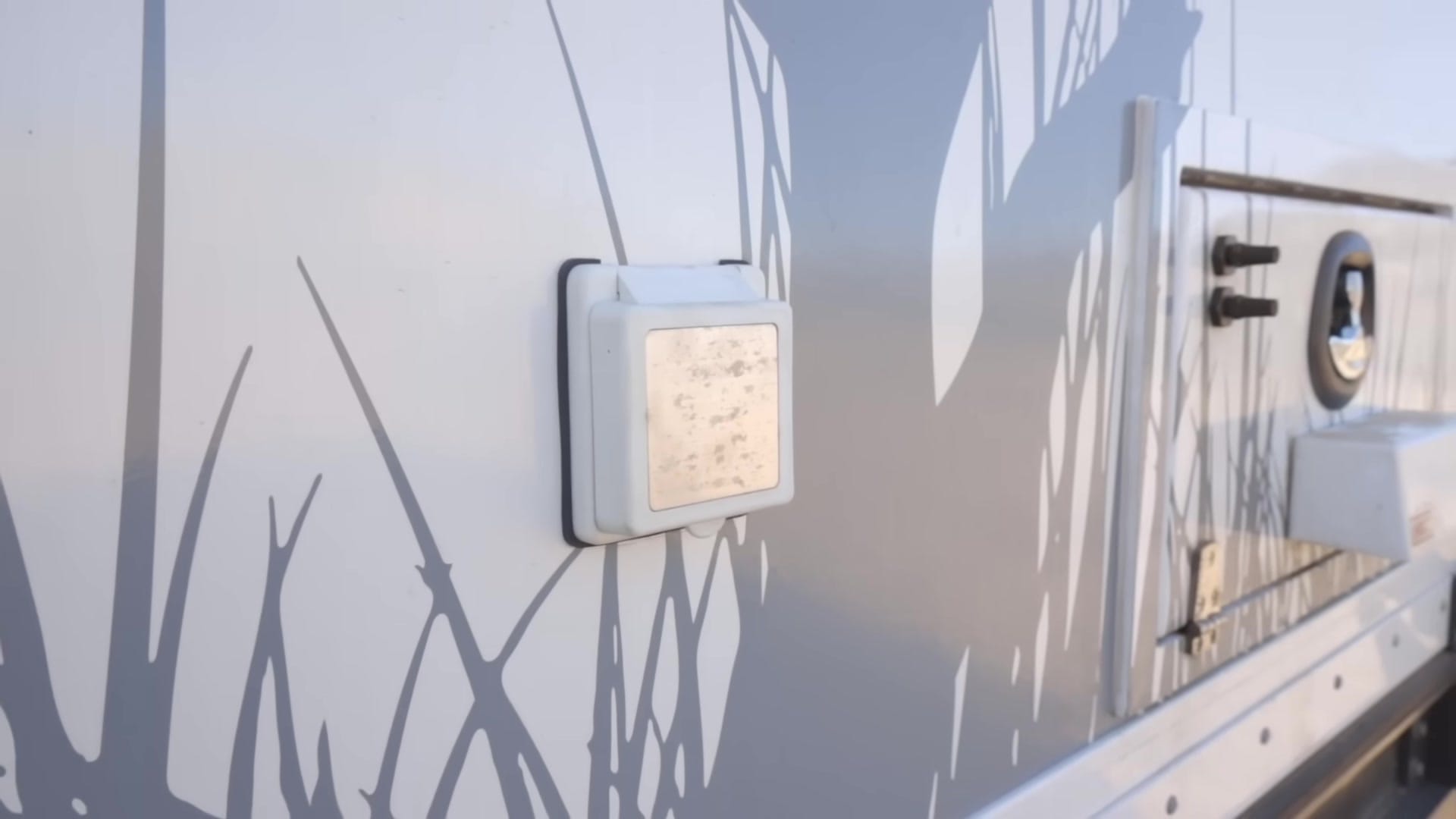This Overland X10 Flatbed—How Solo Glamping Became Livable
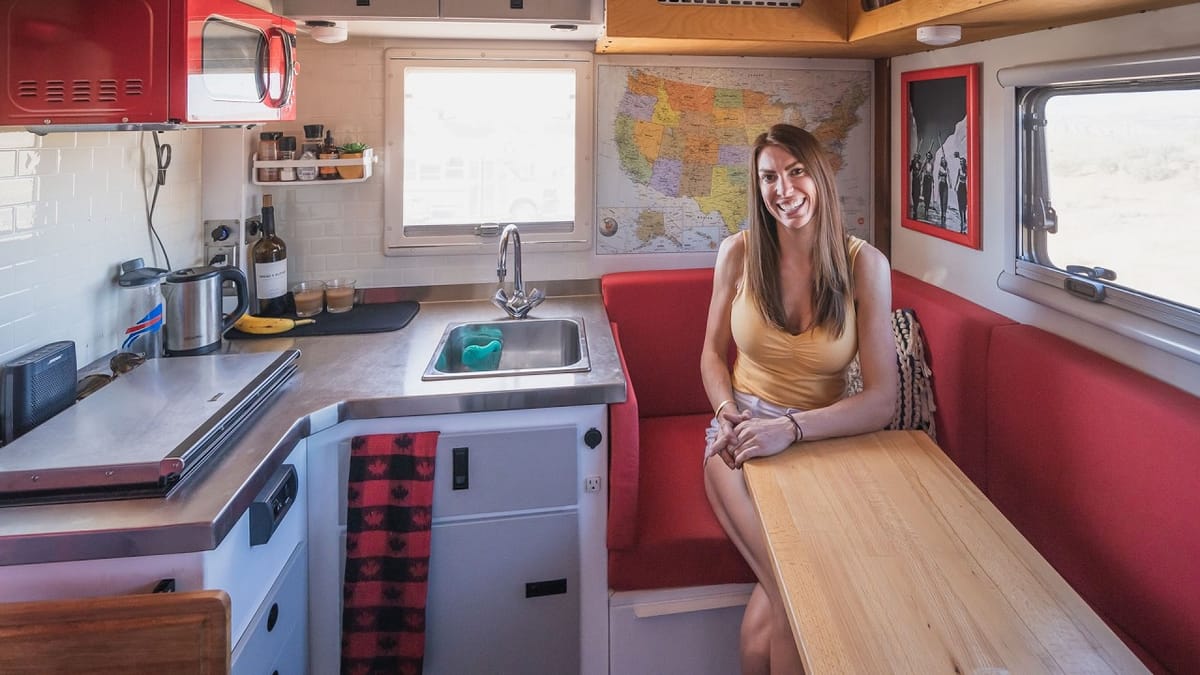
Lindsey built a rig that balances rugged trail readiness with creature comforts that matter on the road.
She’s been traveling solo for years and living in this Overland Explorer X10 flatbed camper for two of them.
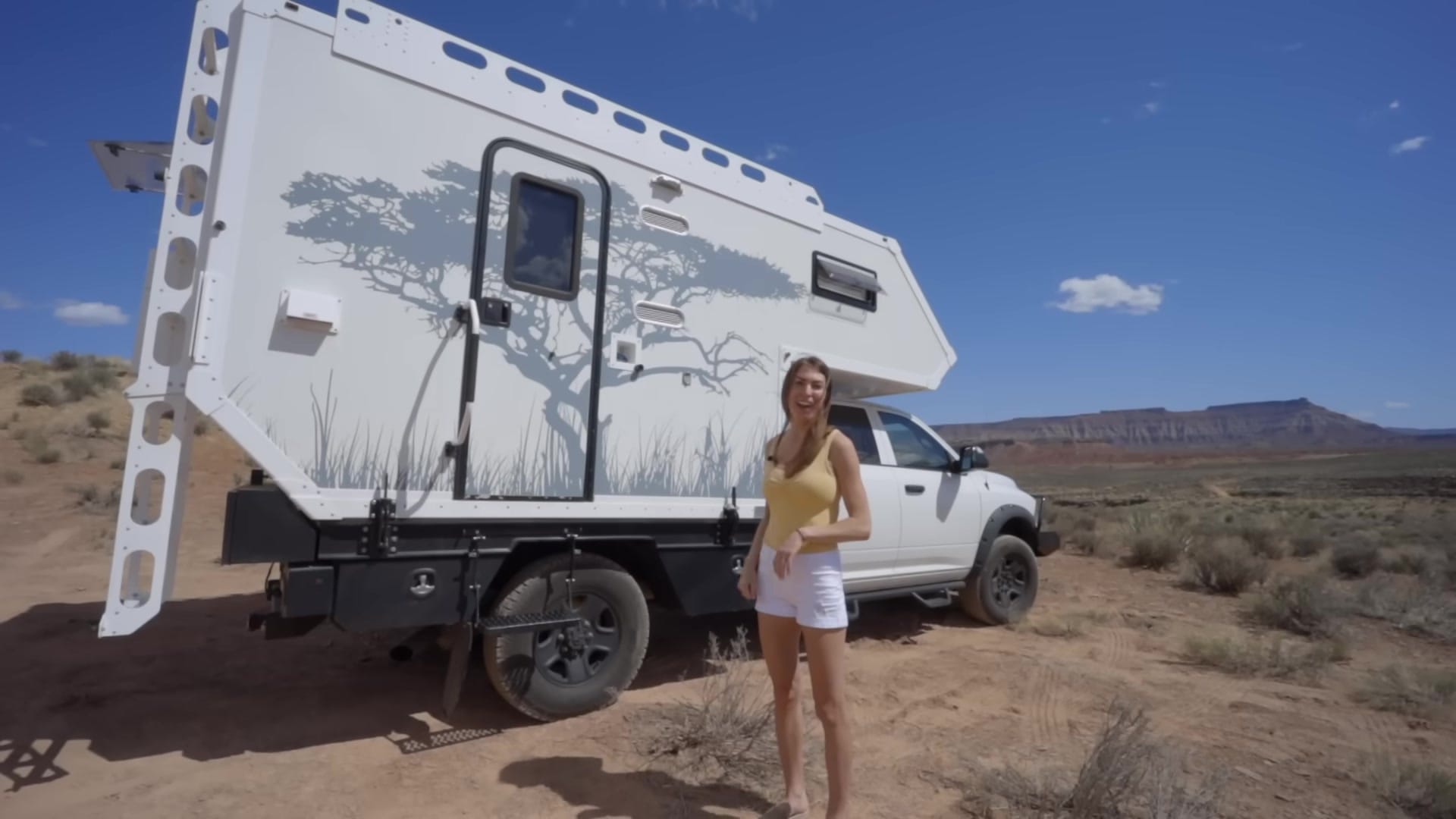
Why This Rig Works for a Solo Glamper
The flatbed layout frees up interior footprint that would be lost over wheel hubs, so tanks, closets, and living space all stay inside and dry.
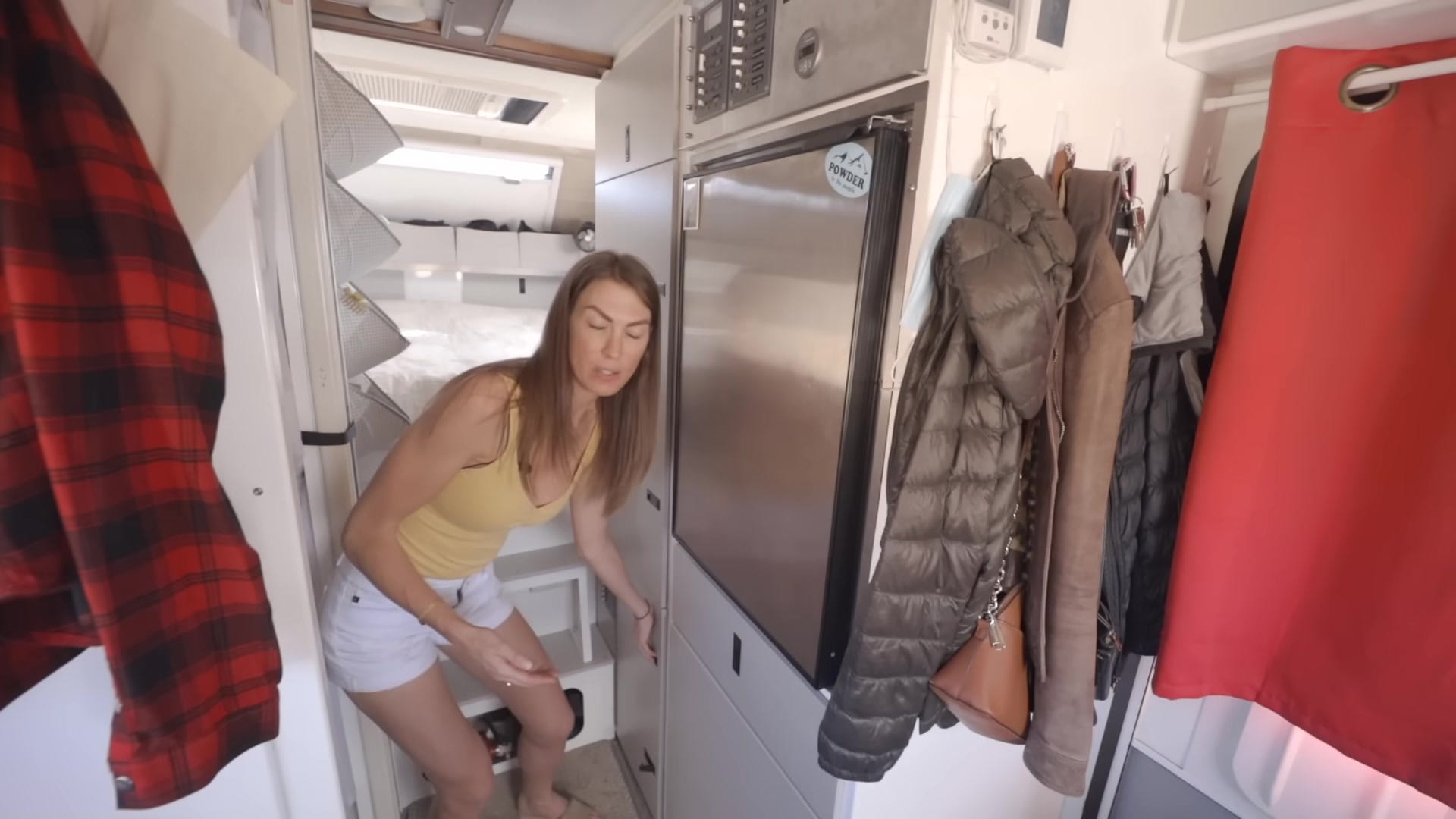
That internal placement makes the camper truly four‑season—plumbing and tanks stay protected from freezes, which removes one major solo‑traveler worry.
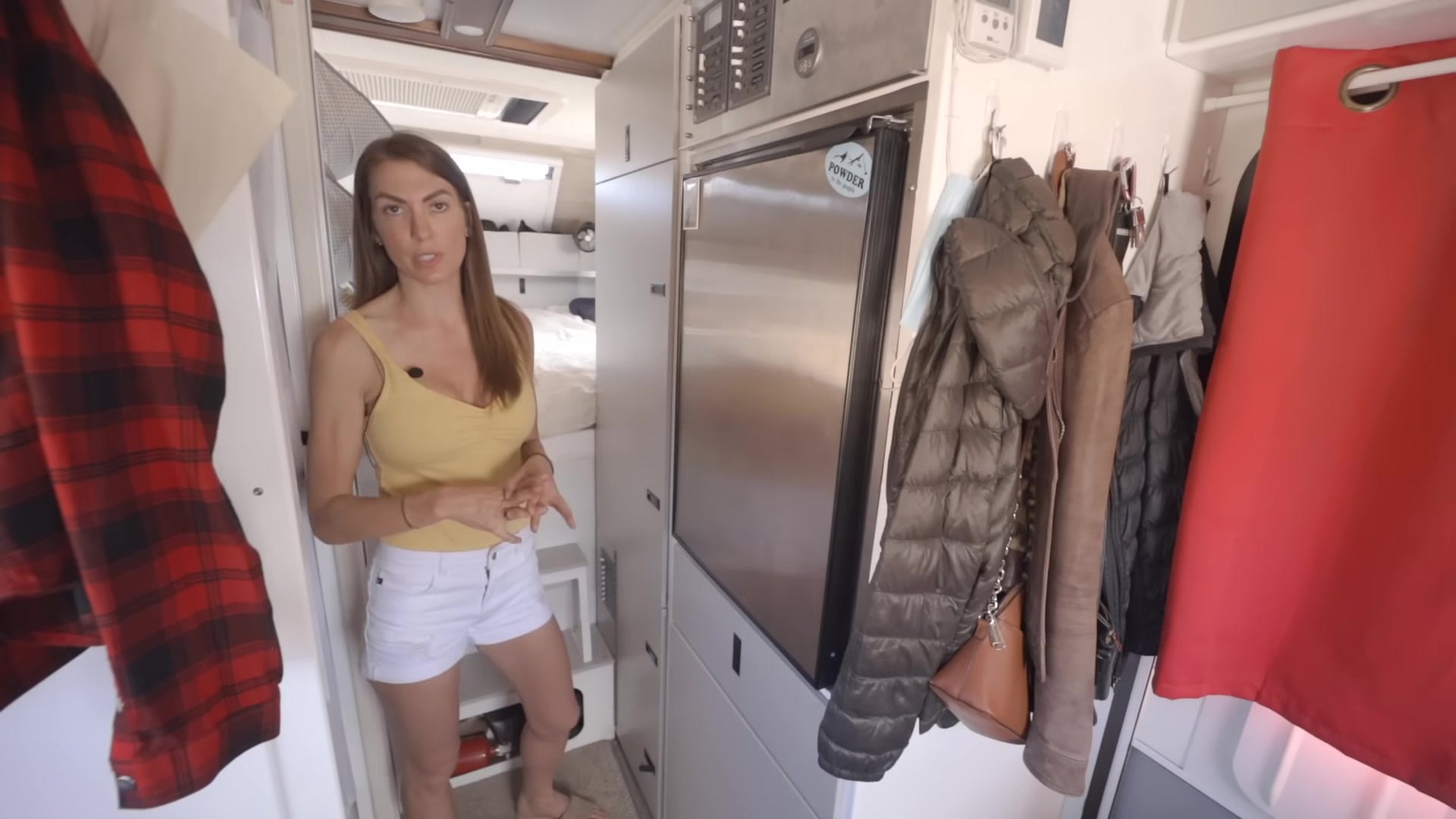
Visibility and peace of mind are built in: there’s a window on every wall so you can check surroundings from bed or couch without getting up.
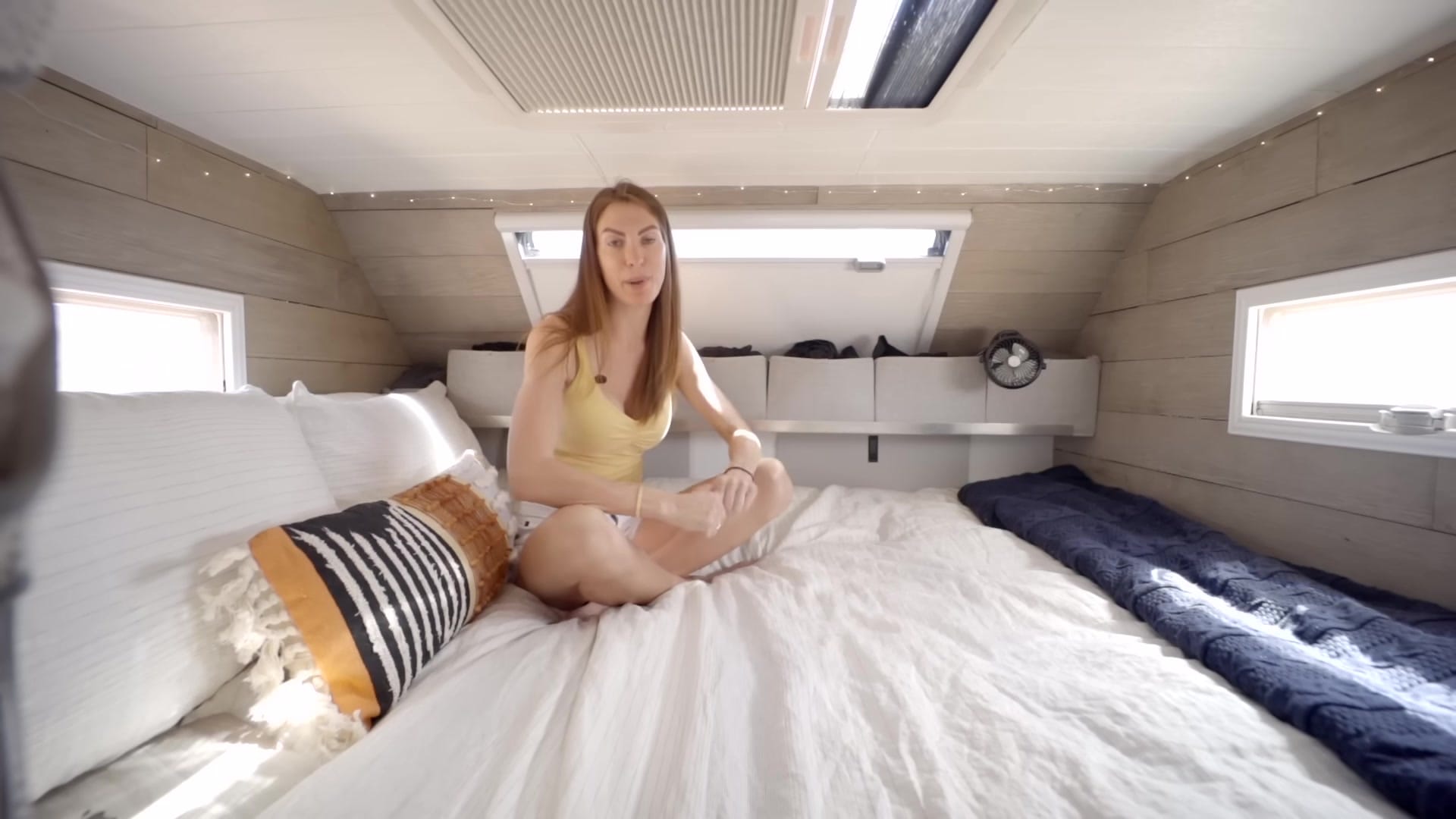
Small safety touches matter too — an alarm clicker sits within arm’s reach of the headboard for instant visibility and noise if anything looks off at night.
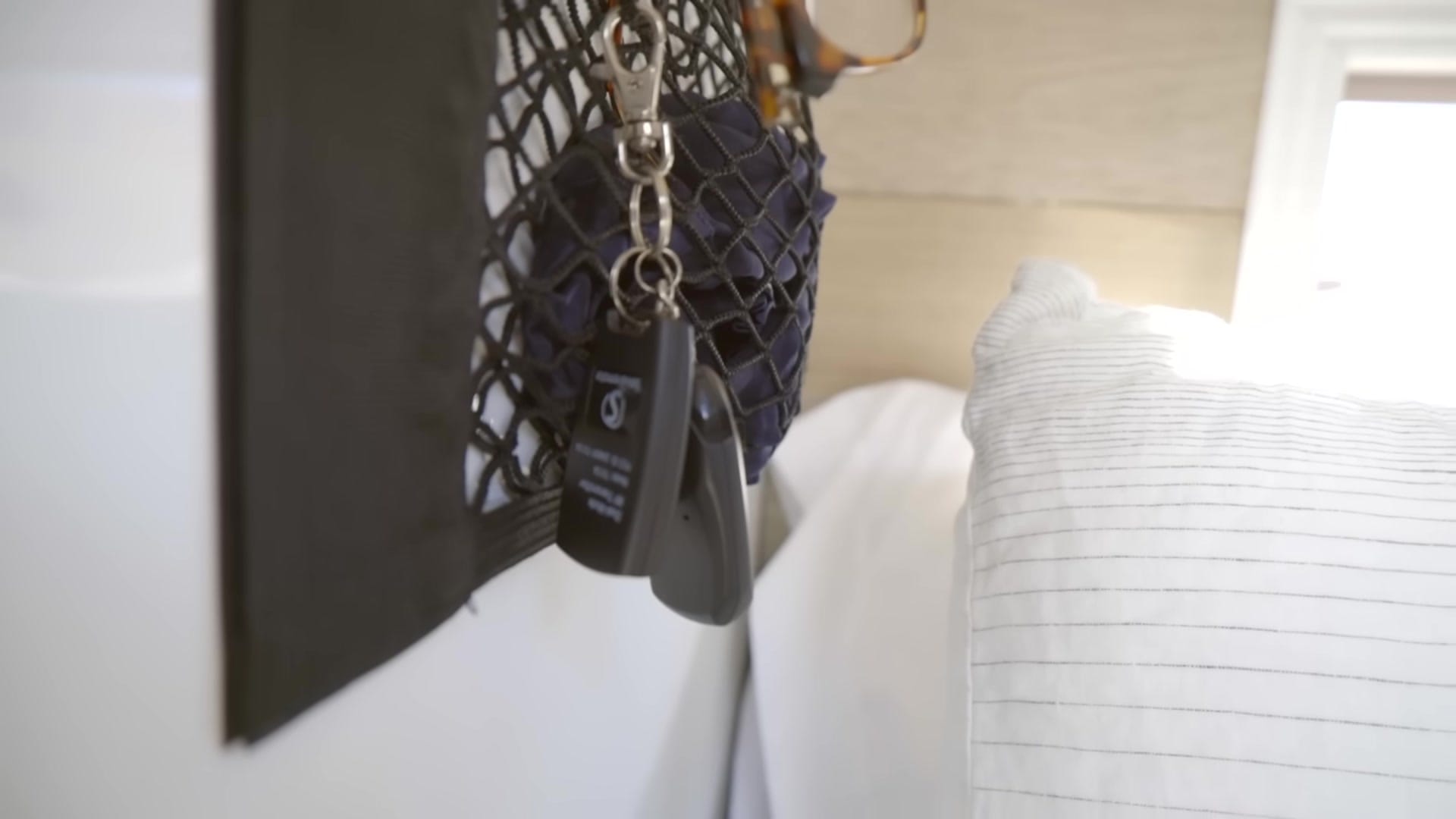
Kitchen & Daily Living — power, appliances, and clever storage
The kitchen sits immediately left on entry and is compact by design, so everything needed for daily life lives within arm’s reach.
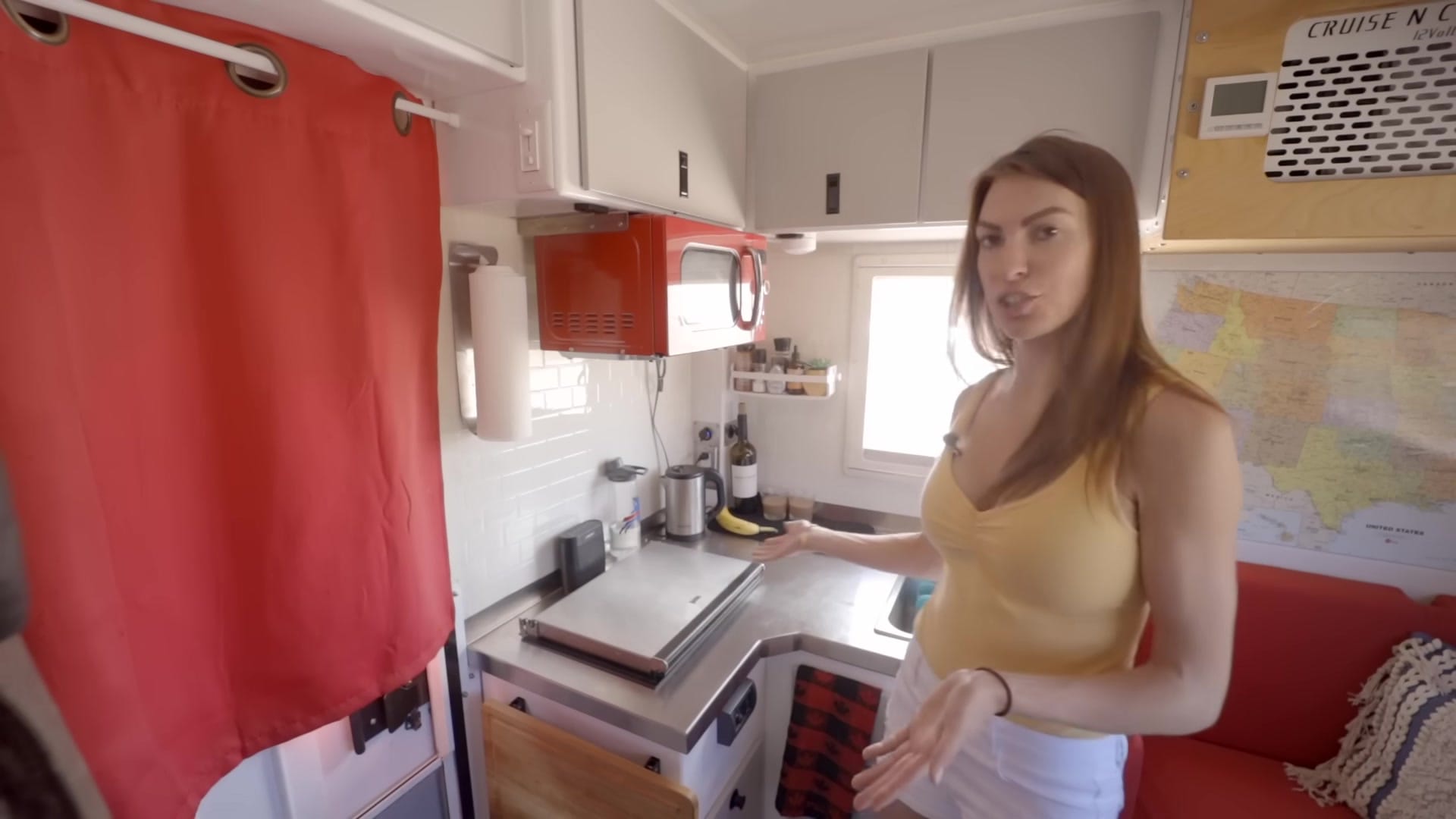
A diesel cooktop doubles as a furnace when closed, which keeps one system doing double duty and frees up precious space.
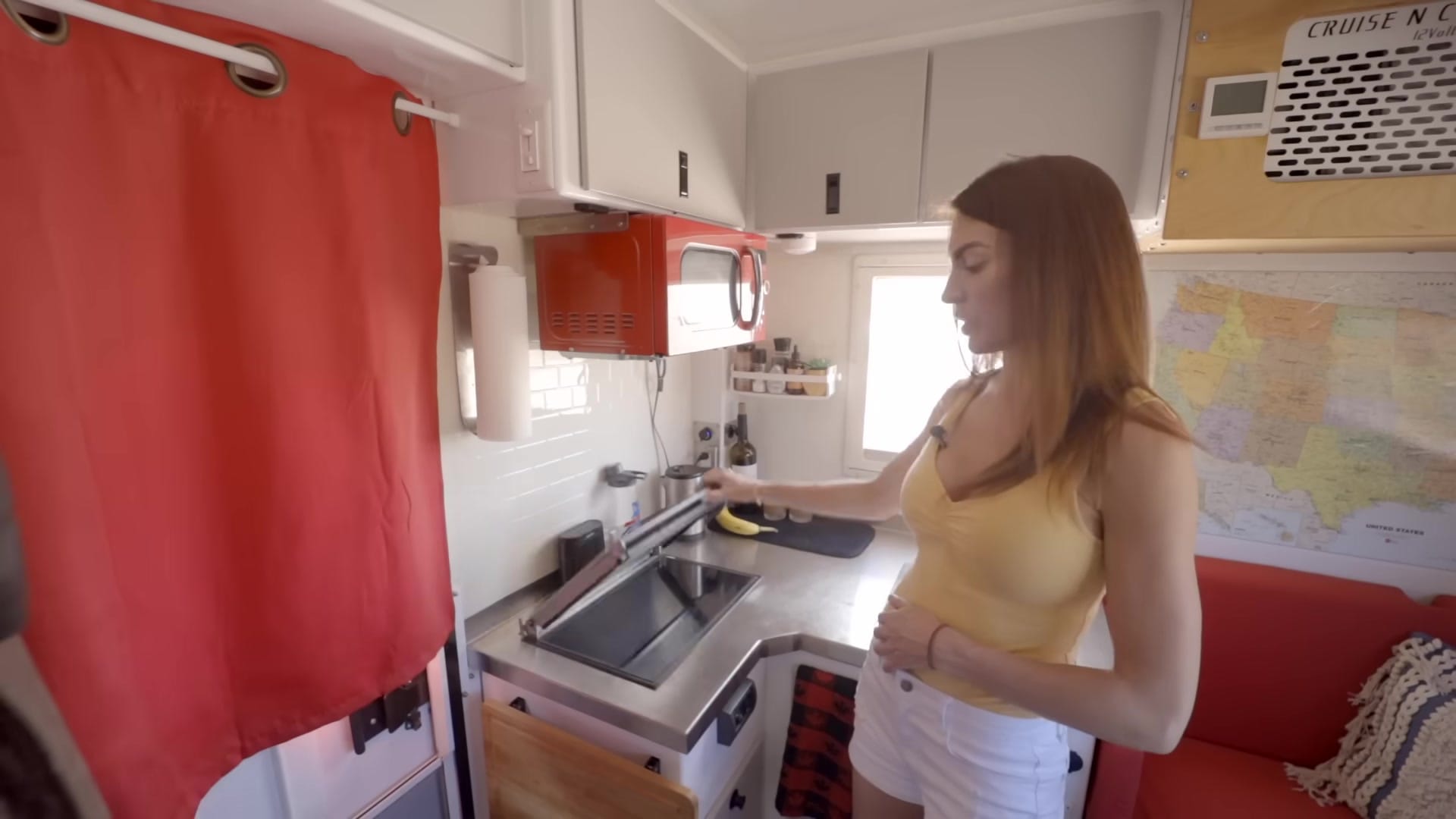
Water capacity is decent for a solo rig—42 gallons of fresh water with easily accessible plumbing panels for servicing.
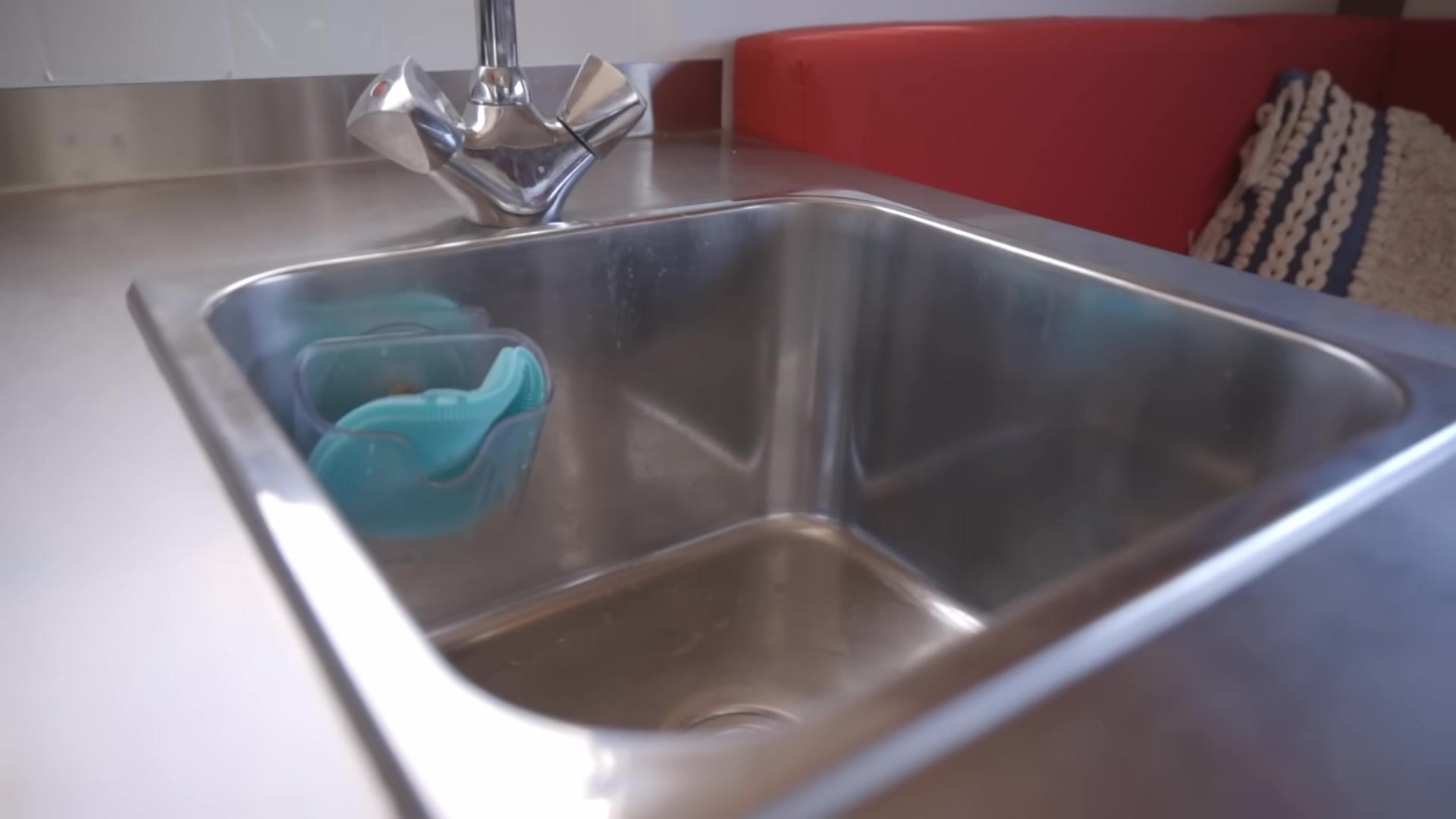
Tiny, smart drawers replace full‑size drawers (yes, she cut a standard silverware tray to fit) so utensils and toiletries stay organized without wasted room.
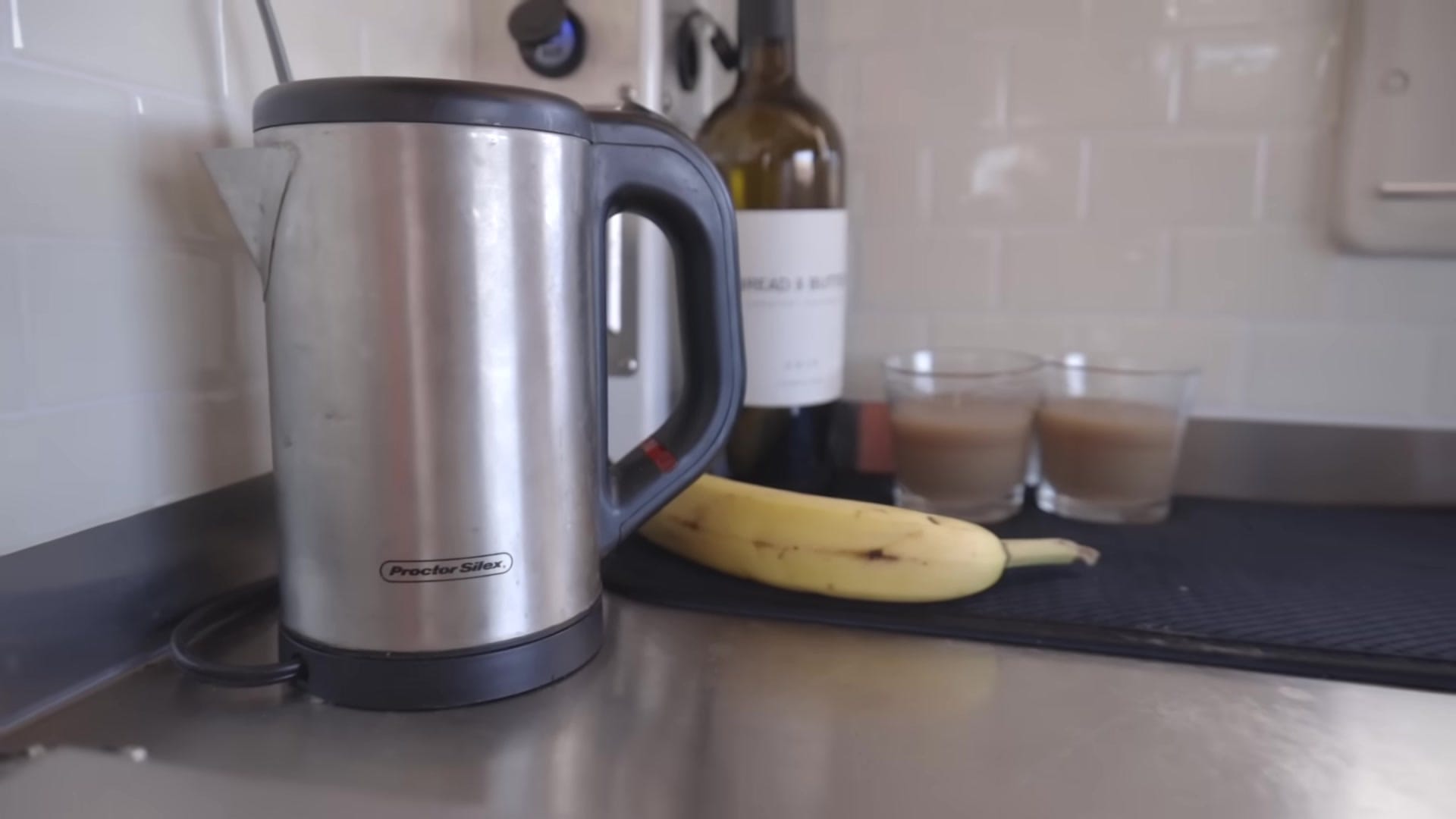
Comfort Essentials — heating, AC, water, and the bathroom that actually fits
Cooling comes from an 8,000 BTU, 12‑volt Cruise & Comfort unit that pulls minimal amps and can run in the sun without killing batteries.
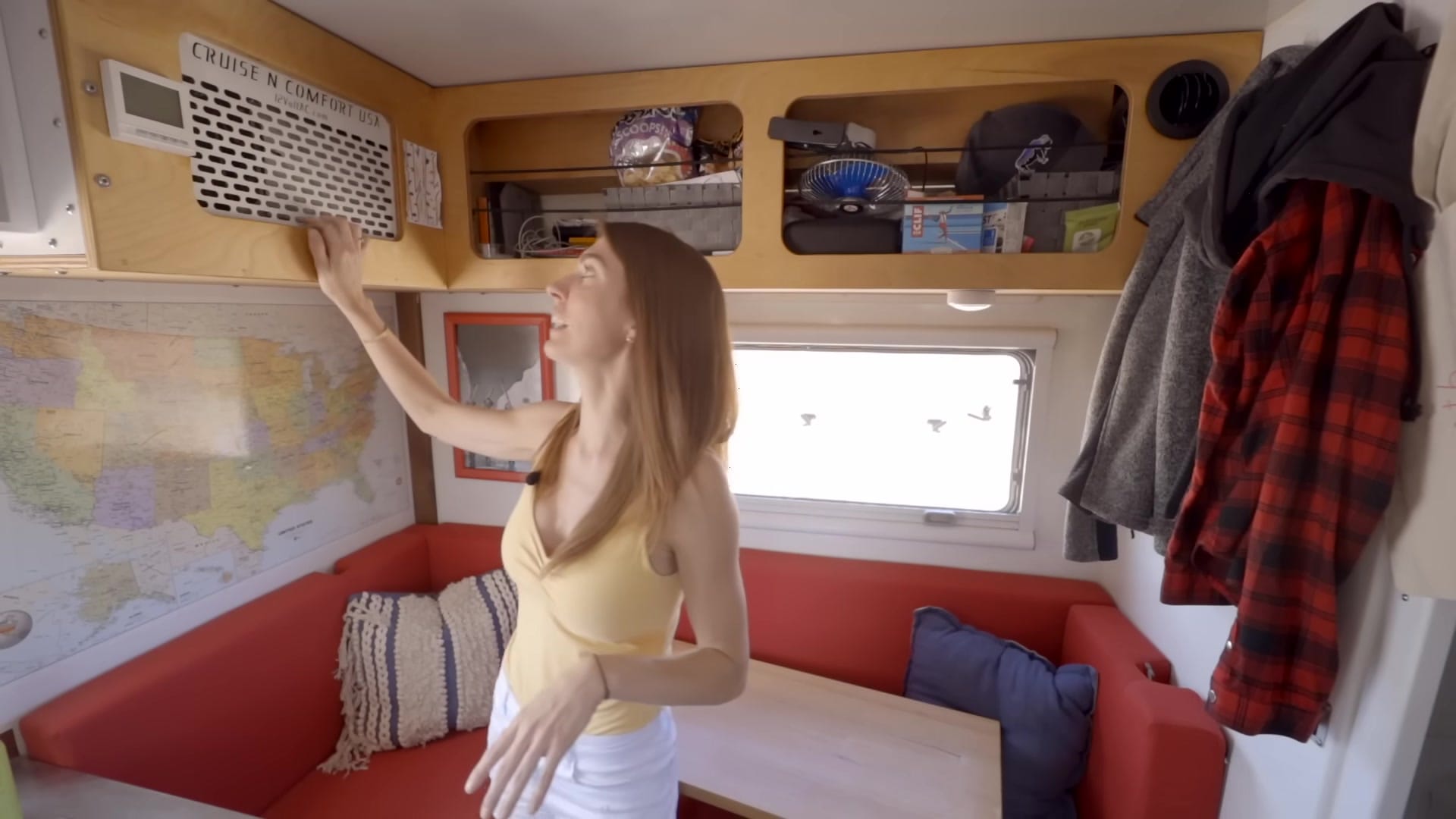
The unit’s rating and low draw make it possible to stay near net‑neutral during daytime solar production, so hot afternoons don’t mean shut‑down hours.
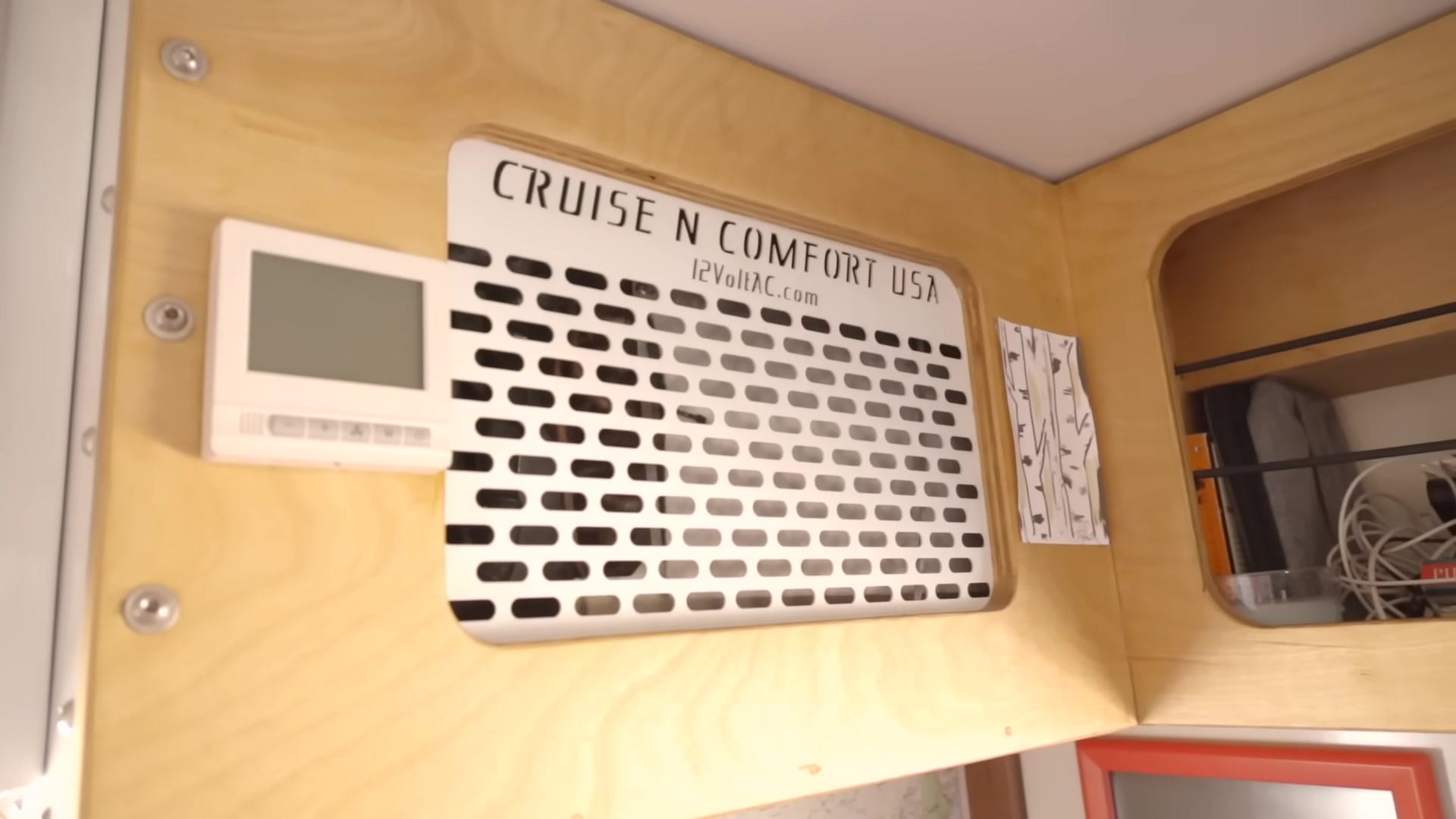
Solar power is part of that comfort loop—almost a thousand watts on the roof keeps daytime loads balanced and supports running the AC while parked in sun.
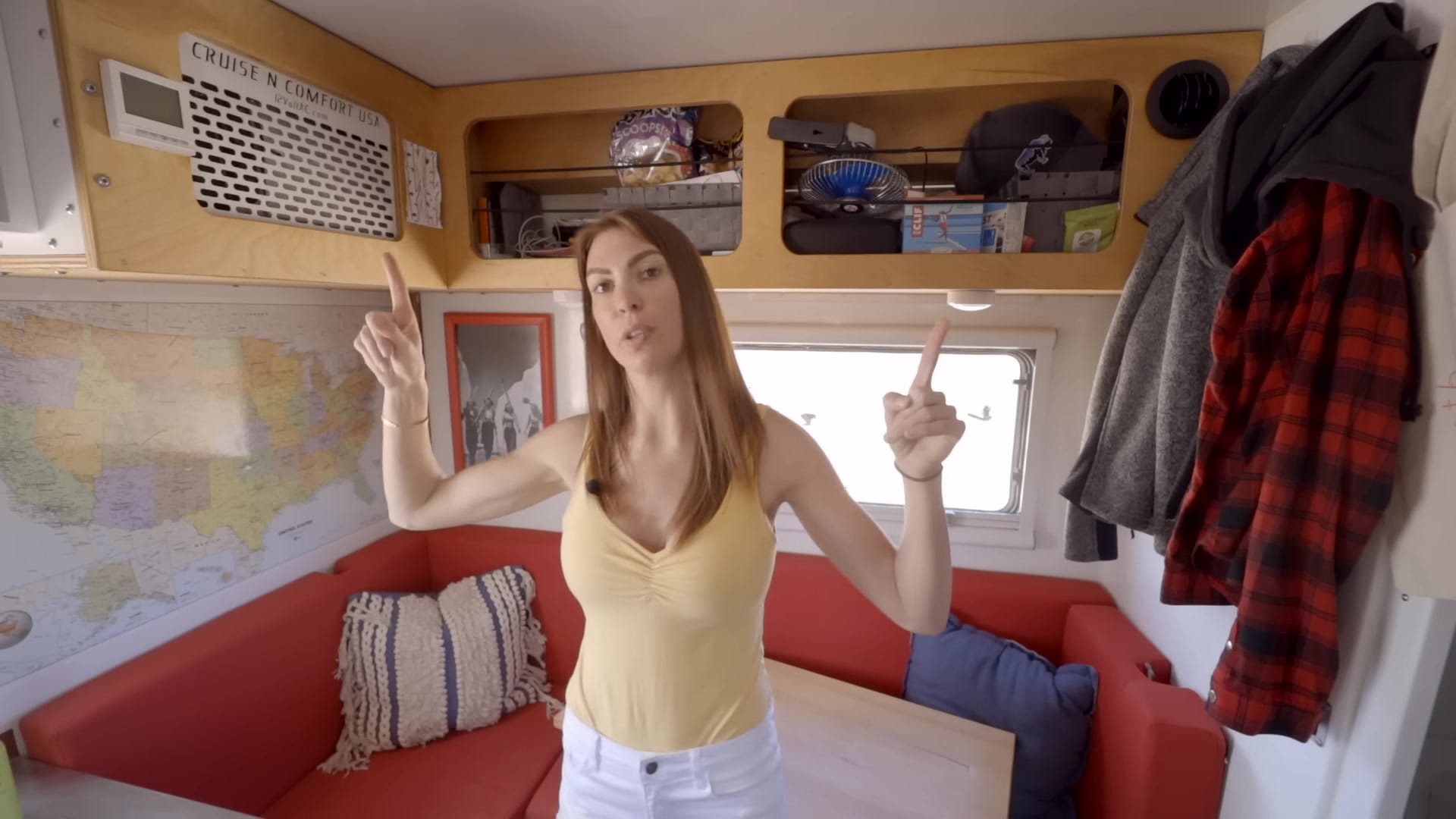
Under one side of the dinette sits the gray tank and the diesel furnace components, keeping mechanicals accessible but out of living space.
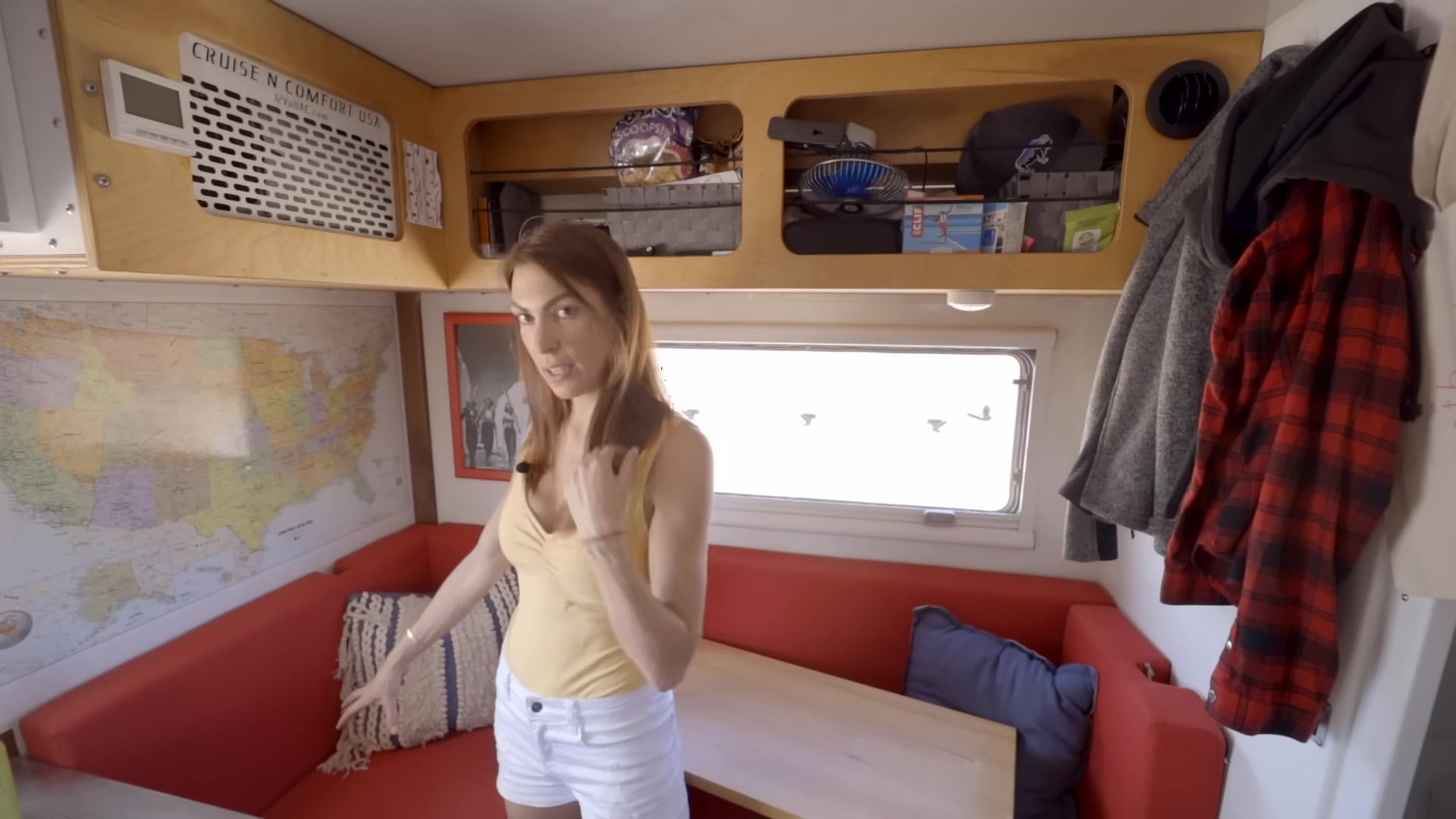
Sleeping, Storage & Safety — bed layout, cubbies, skylight and alarms
The sleeping area is just a few inches shorter than a queen but stretched full‑width for comfortable lounging and sitting up without feeling boxed in.
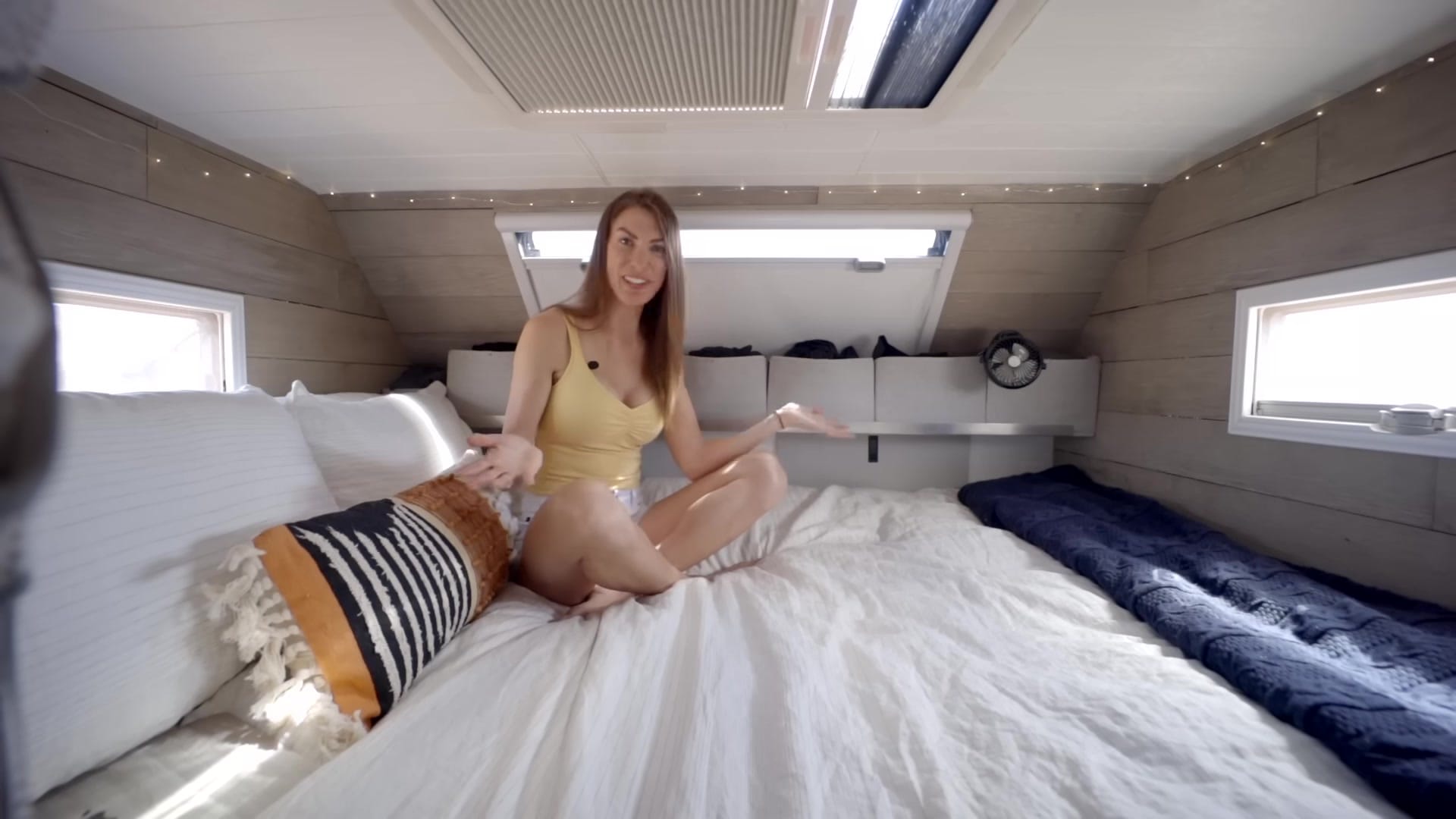
The nose gets useful dead‑space turned into storage bins that hold bins, books, and the odd bottle of wine while driving.
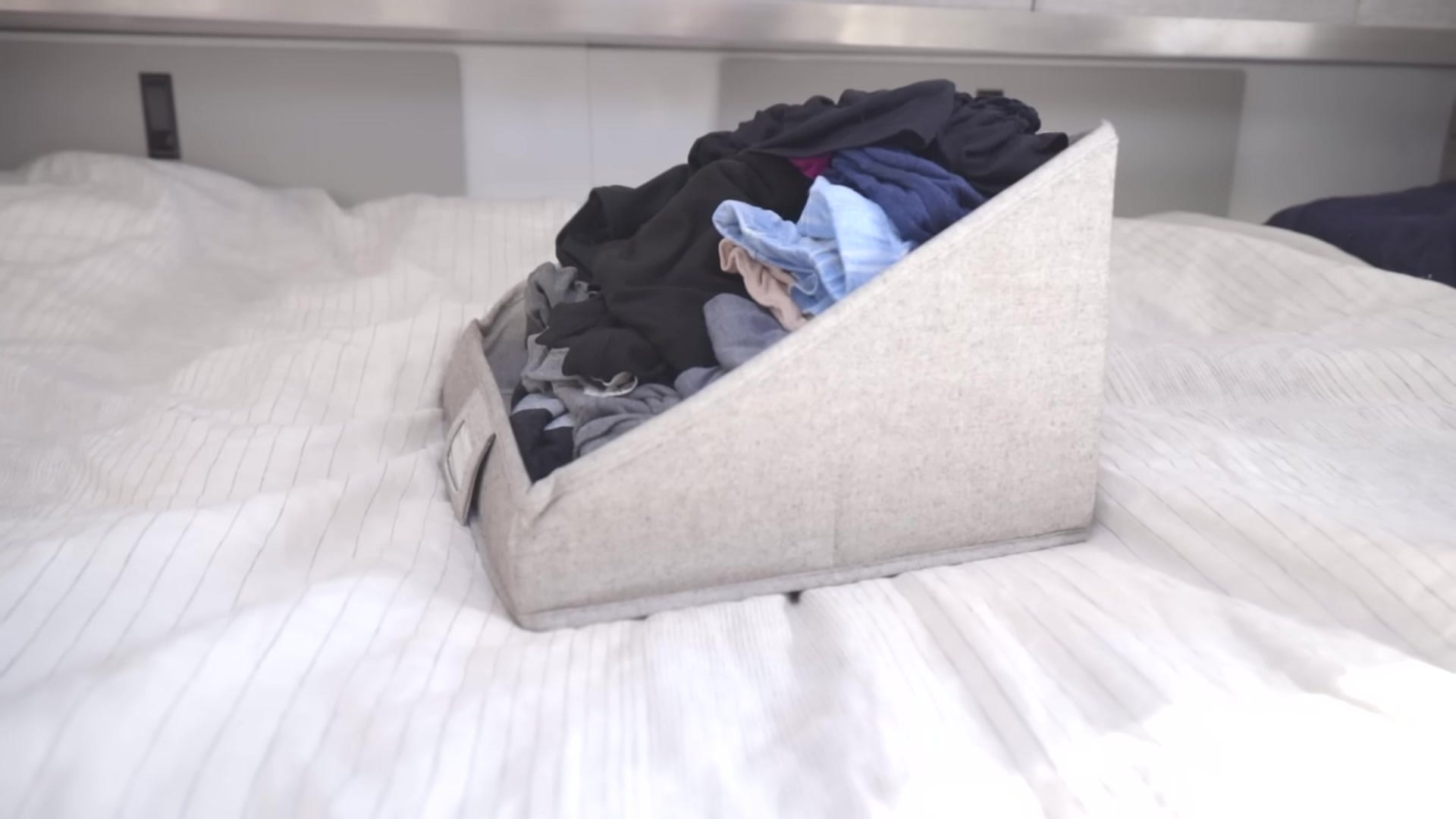
A custom memory foam mattress is tailored to the footprint and kept thin enough for headroom without sacrificing comfort.
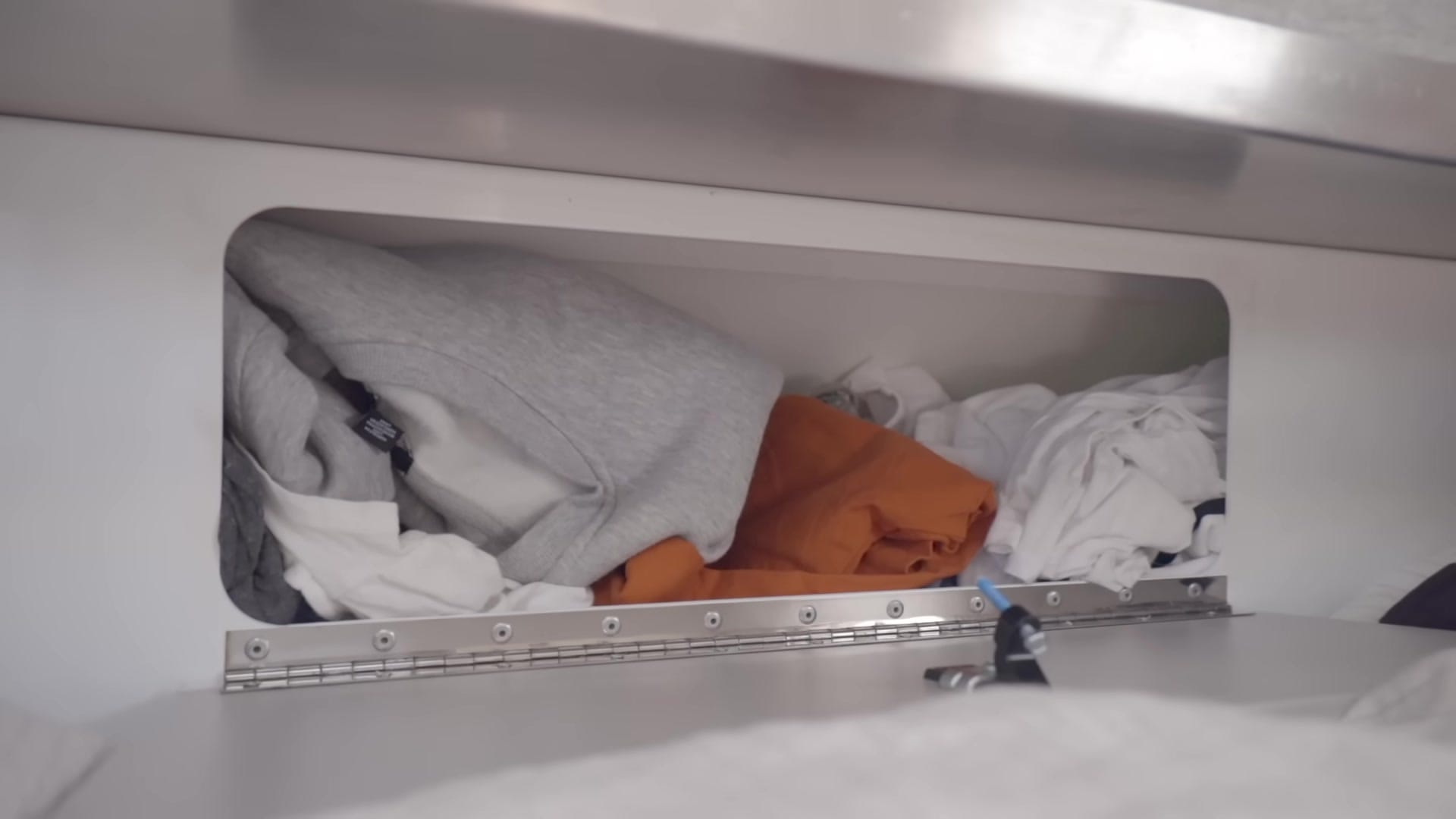
An escape skylight sits above the bed for emergency egress and extra light, a small feature that pays huge peace‑of‑mind dividends.
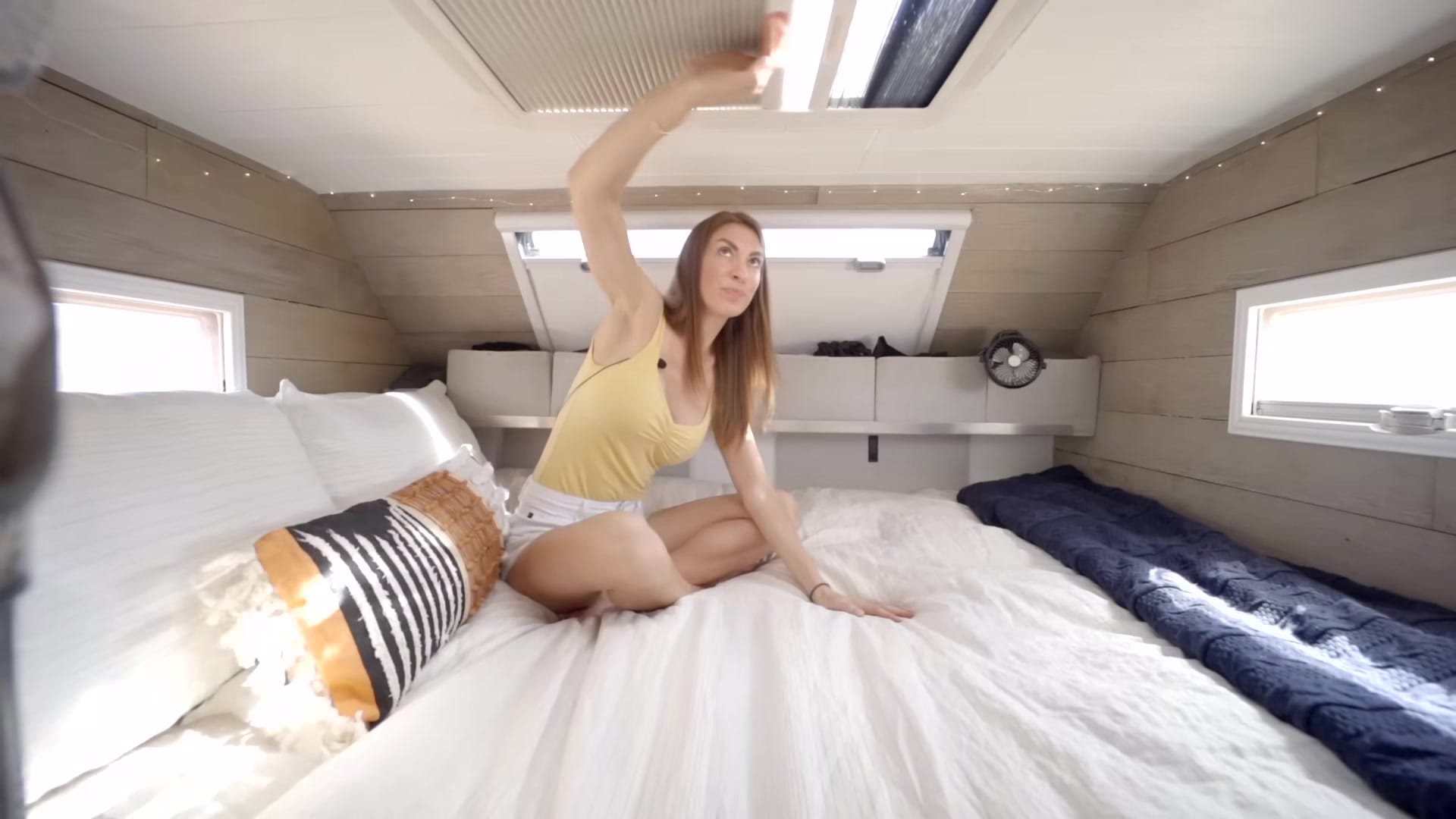
Chassis, Truck & Exterior Gear — flatbed advantages, ski box, bumpers
The whole camper sits on a Ram 3500 chassis, giving towing reliability and plenty of real‑world capability for mountain roads and loaded climbs.
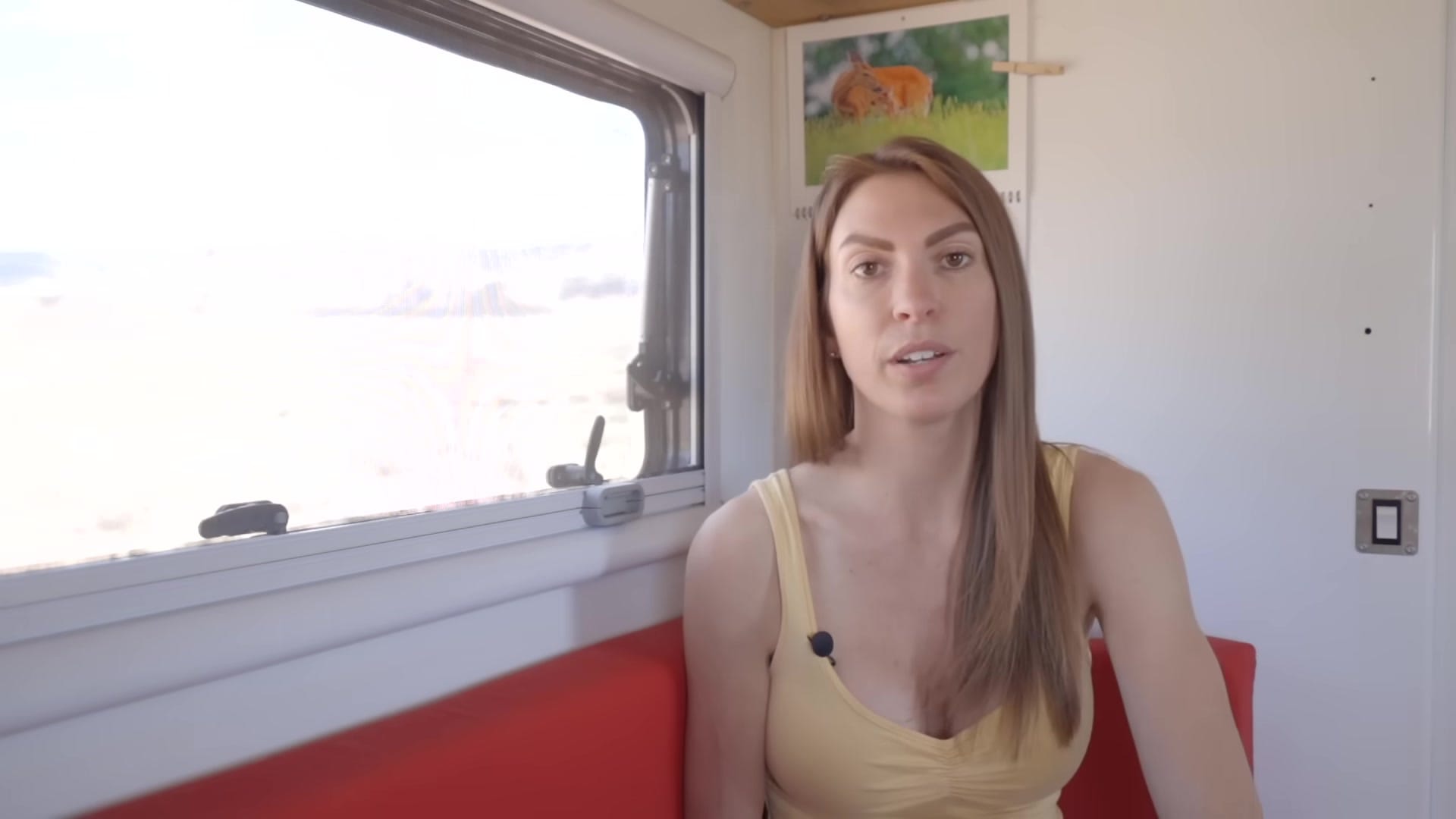
Under the hood is a 6.4 Hemi engine—Lindsey prefers the reliability and everyday torque for this setup even if it’s not diesel.
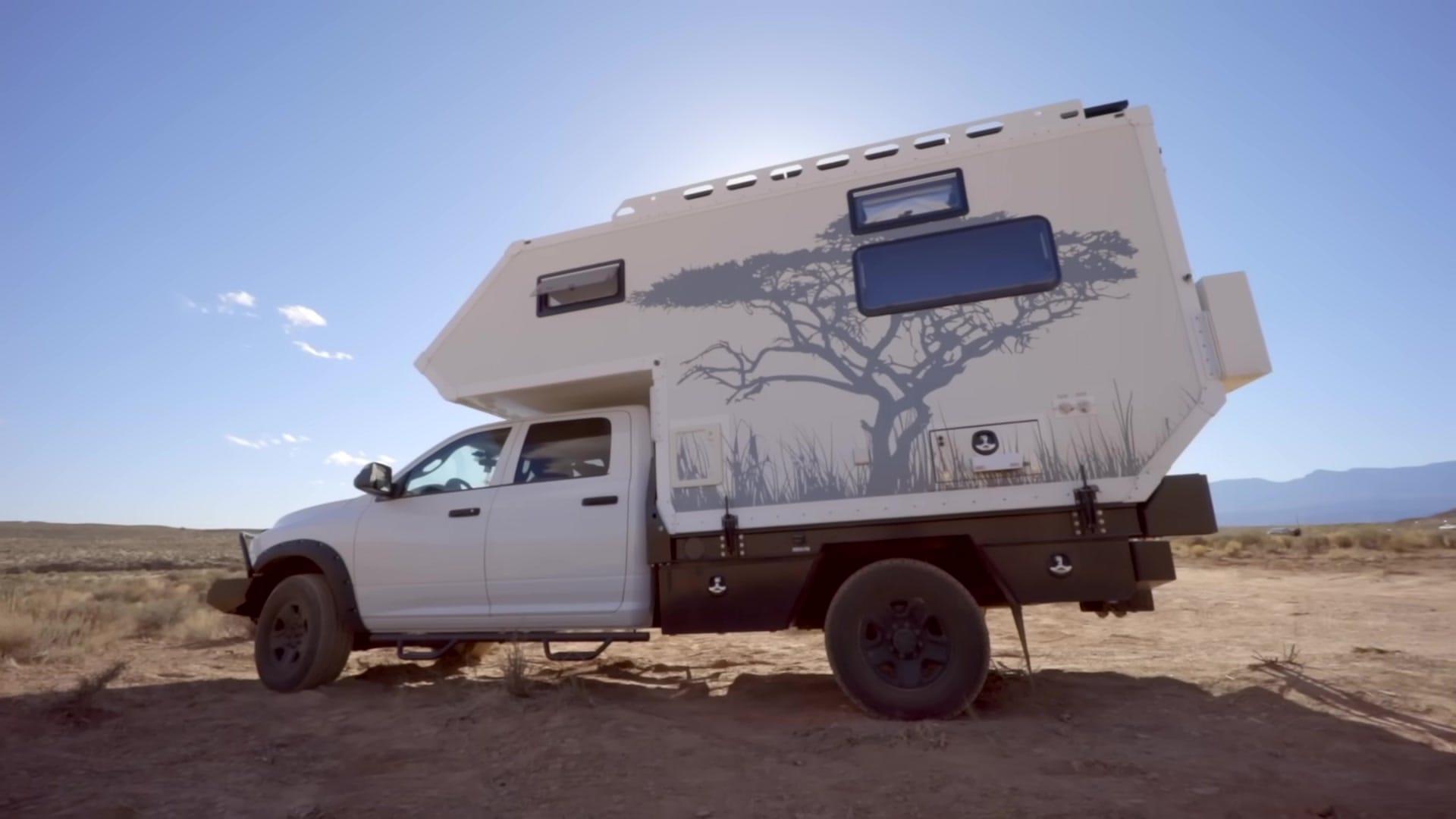
Flatbed builds add usable external storage: four sealed compartments and larger back‑seat storage mean tools, heaters, and spares ride protected and easy to reach.
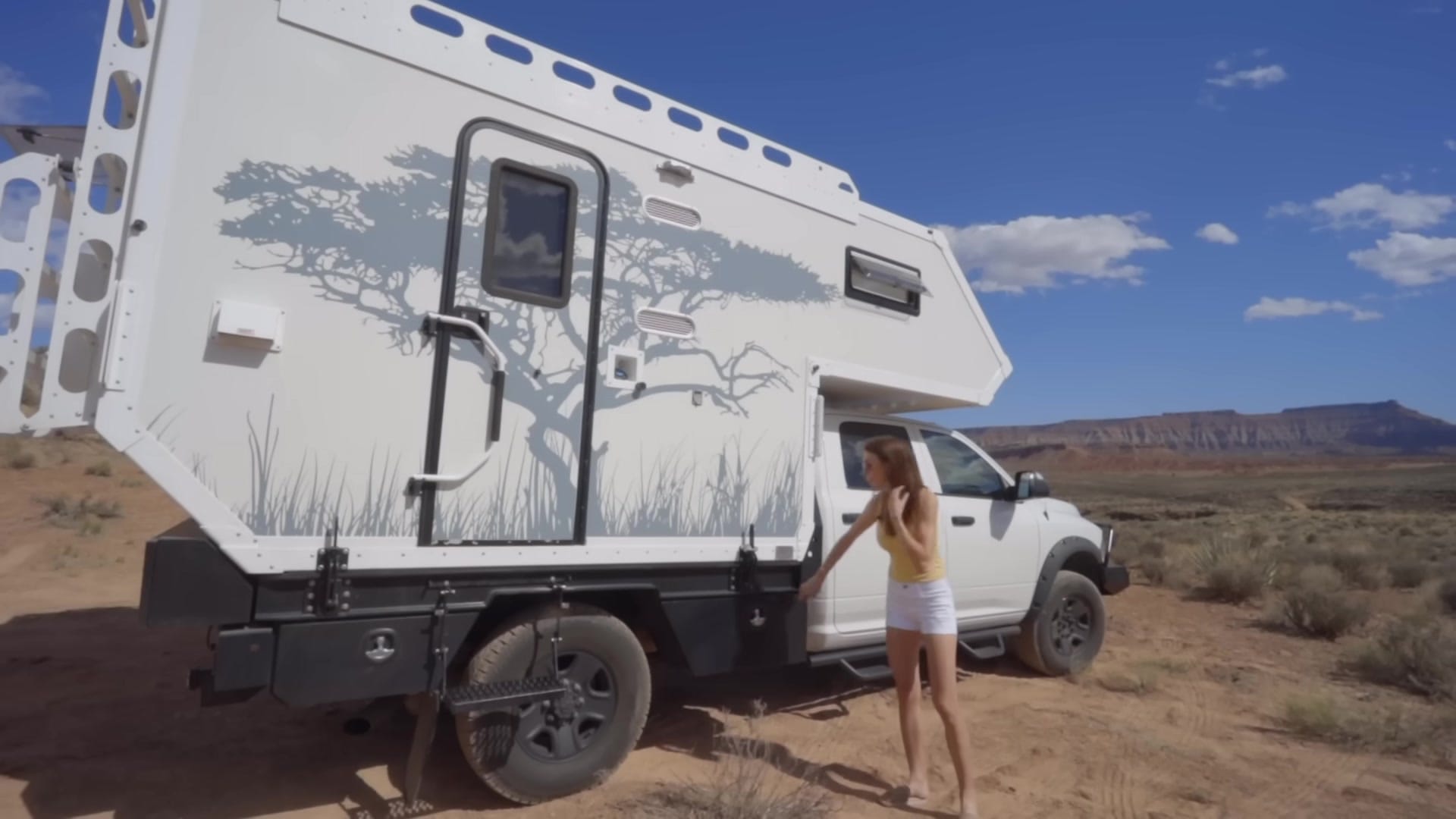
A welded, waterproof ski box built into the rear carries two to three pairs of skis and mounts the backup camera to prevent tampering—perfect for winter days when roof racks aren’t ideal.
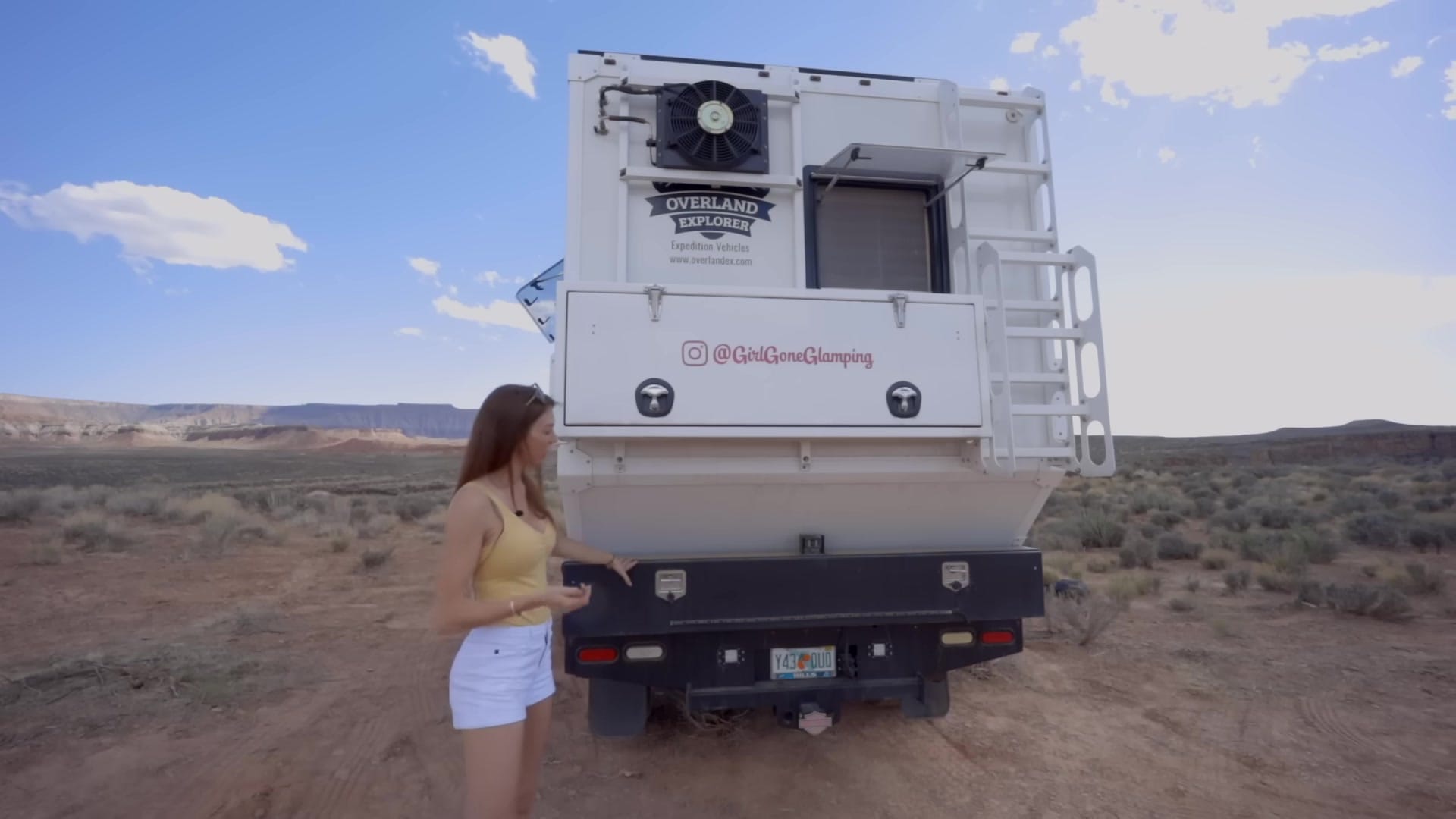
Solar, Batteries & Off‑Grid Performance — real numbers and real use
The battery bank hides under a cabinet and houses four Li‑ion 100Ah batteries that supply loads like the inverter, microwave, and fans reliably.
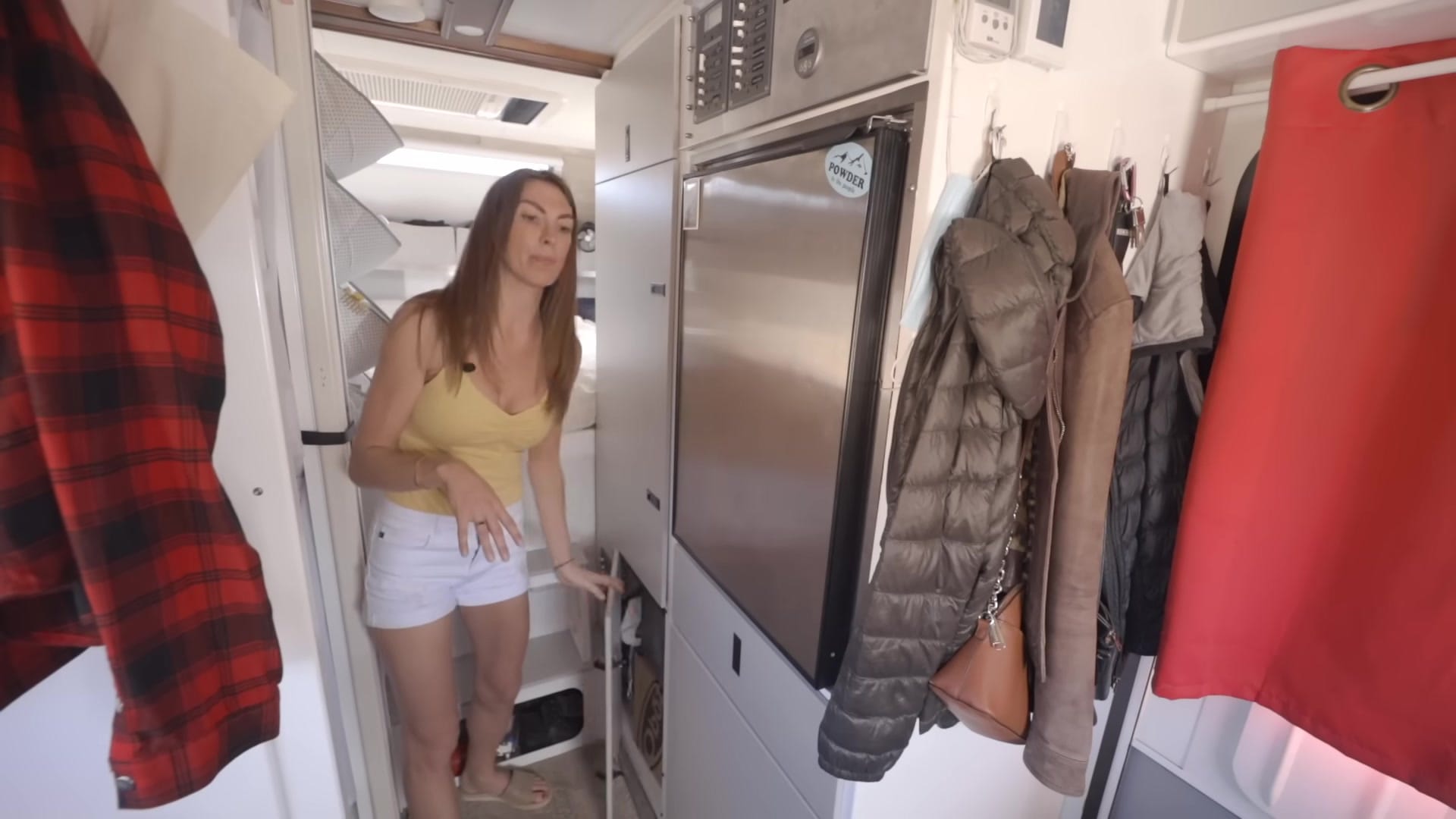
Power conversion and distribution rely on a robust Victron setup and a 2,000‑watt inverter so household appliances and blow dryers aren’t off limits.
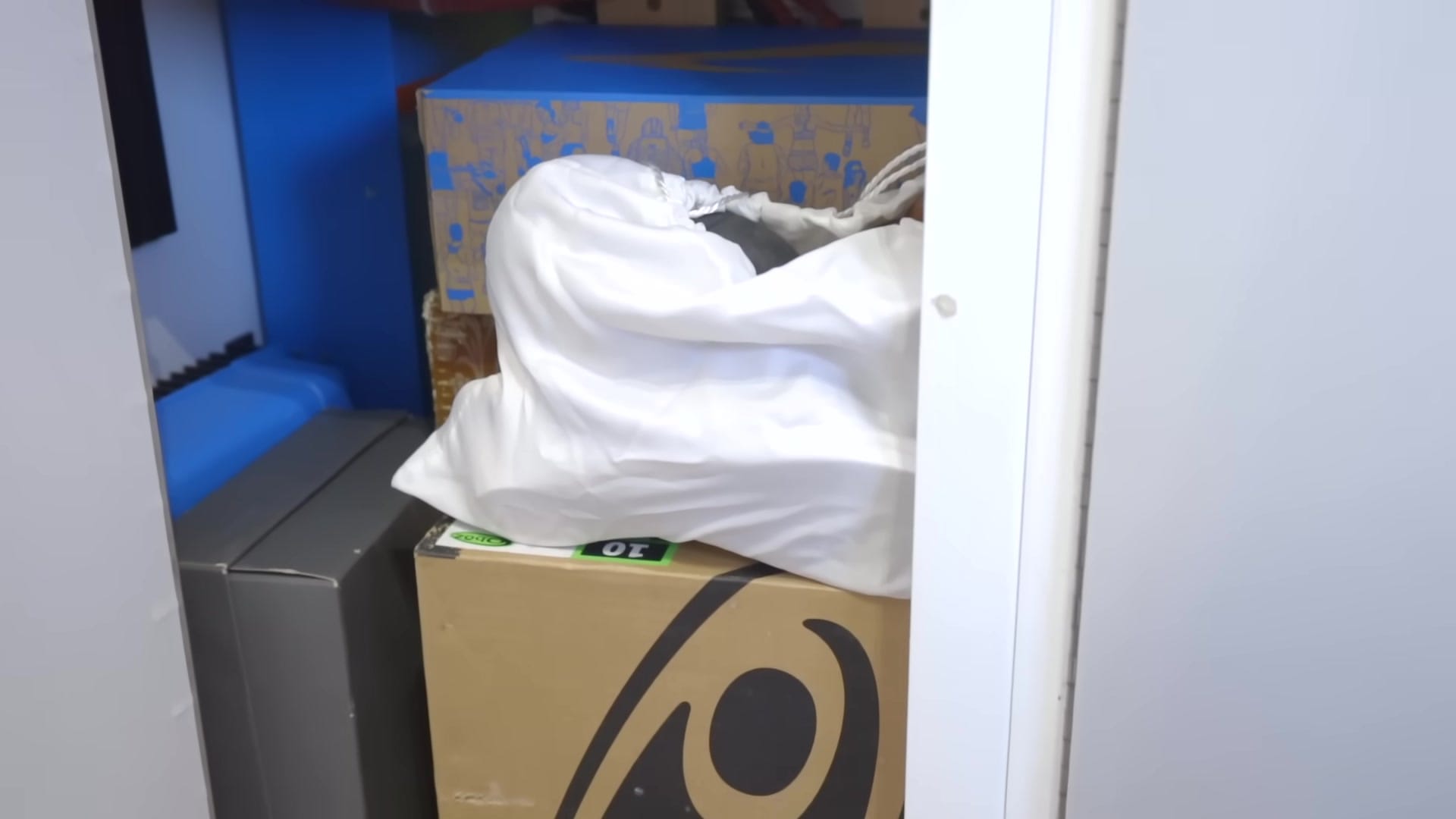
Roof power is real: three 330W Jenko panels add up to just shy of 1,000 watts, enough to run daytime loads and refill batteries while parked in sun.
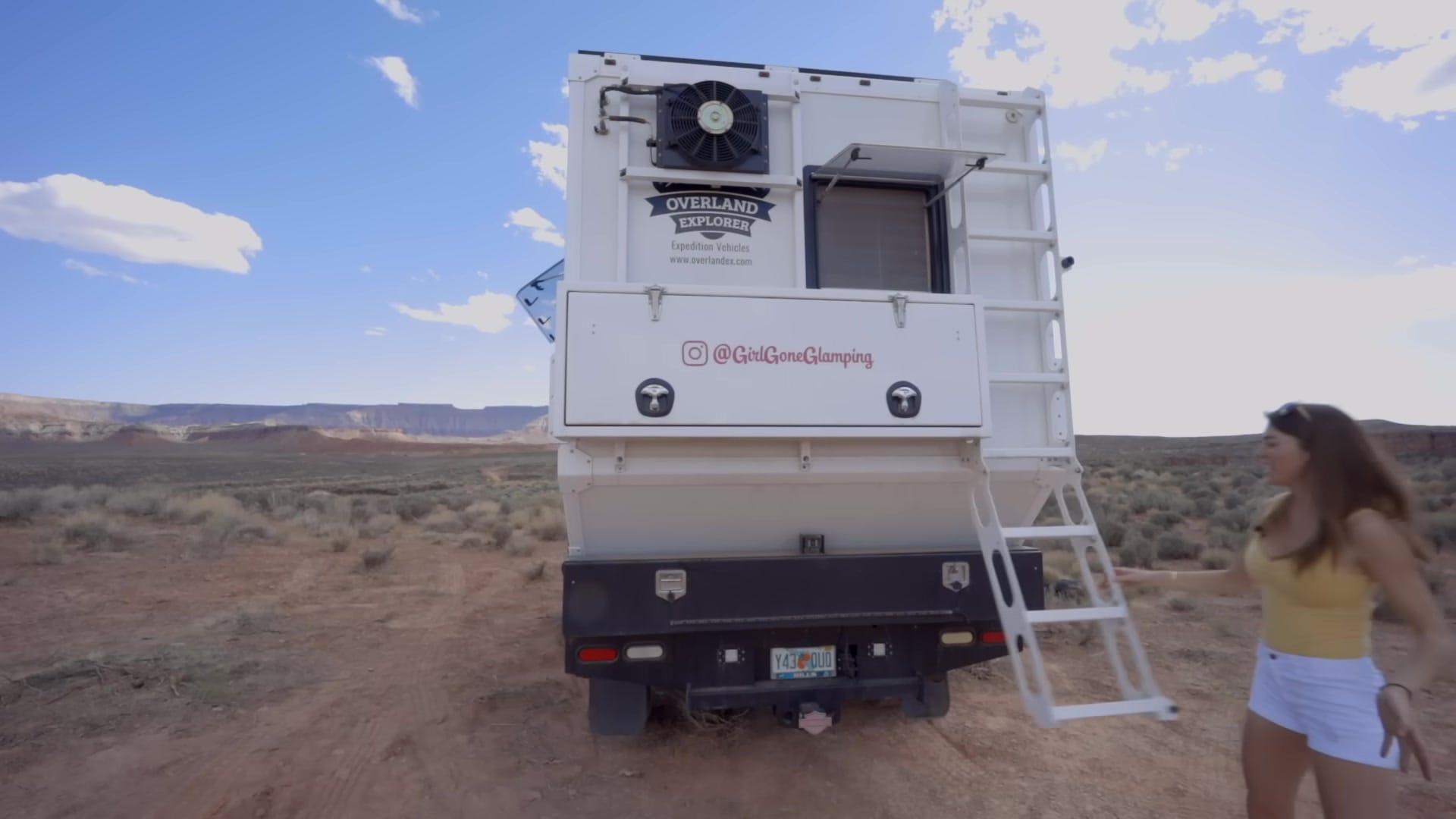
The result: with the solar and battery bank combined, the camper has not needed shore power in almost two years on the road, which is the clearest metric of off‑grid independence here.
